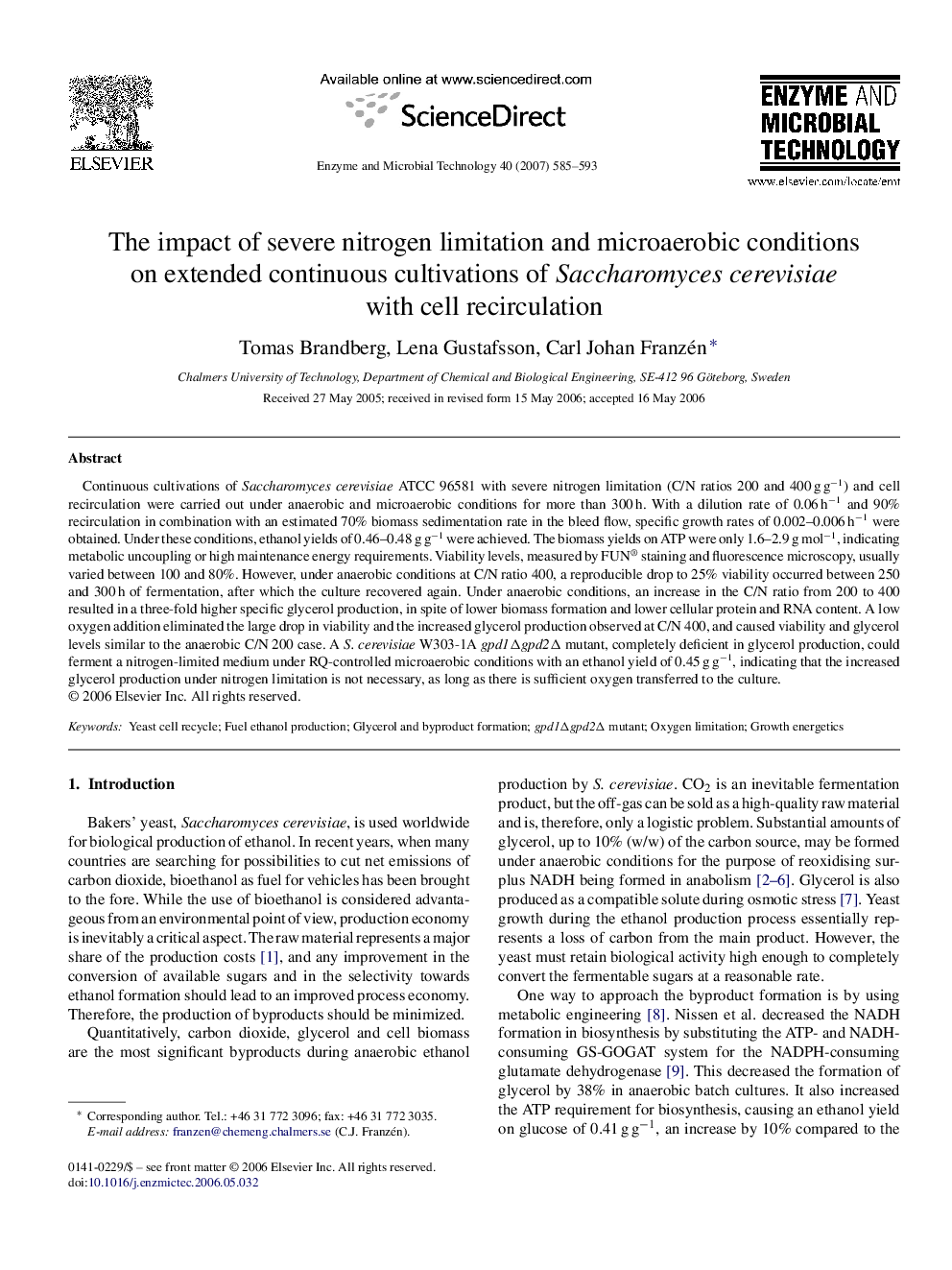| Article ID | Journal | Published Year | Pages | File Type |
|---|---|---|---|---|
| 18013 | Enzyme and Microbial Technology | 2007 | 9 Pages |
Continuous cultivations of Saccharomyces cerevisiae ATCC 96581 with severe nitrogen limitation (C/N ratios 200 and 400 g g−1) and cell recirculation were carried out under anaerobic and microaerobic conditions for more than 300 h. With a dilution rate of 0.06 h−1 and 90% recirculation in combination with an estimated 70% biomass sedimentation rate in the bleed flow, specific growth rates of 0.002–0.006 h−1 were obtained. Under these conditions, ethanol yields of 0.46–0.48 g g−1 were achieved. The biomass yields on ATP were only 1.6–2.9 g mol−1, indicating metabolic uncoupling or high maintenance energy requirements. Viability levels, measured by FUN® staining and fluorescence microscopy, usually varied between 100 and 80%. However, under anaerobic conditions at C/N ratio 400, a reproducible drop to 25% viability occurred between 250 and 300 h of fermentation, after which the culture recovered again. Under anaerobic conditions, an increase in the C/N ratio from 200 to 400 resulted in a three-fold higher specific glycerol production, in spite of lower biomass formation and lower cellular protein and RNA content. A low oxygen addition eliminated the large drop in viability and the increased glycerol production observed at C/N 400, and caused viability and glycerol levels similar to the anaerobic C/N 200 case. A S. cerevisiae W303-1A gpd1Δgpd2Δ mutant, completely deficient in glycerol production, could ferment a nitrogen-limited medium under RQ-controlled microaerobic conditions with an ethanol yield of 0.45 g g−1, indicating that the increased glycerol production under nitrogen limitation is not necessary, as long as there is sufficient oxygen transferred to the culture.
